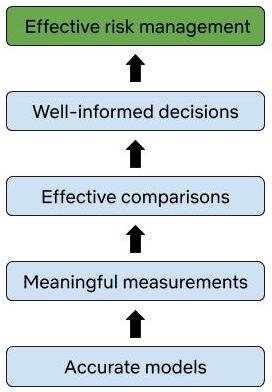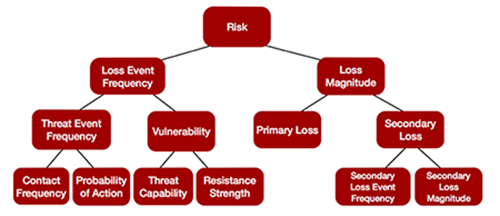Recipe for passing the OpenFAIR exam

Passing and obtaining the OpenGroup’s OpenFAIR certification is a big career booster for information risk analysts. Not only does it look good on your CV, it demonstrates your mastery of FAIR to current and potential employers. It also makes a better analyst because it deepens one’s understanding of risk concepts that may not be often used. I passed the exam myself a while back, and I’ve also helped people prepare and study for it. This is my recipe for studying for and passing the OpenFAIR exam.
What to study
The first thing you need to understand in order to pass the exam is that the certification is based on the published OpenFAIR standard, last updated in 2013. Many people and organizations – bloggers, risk folks on Twitter, the FAIR Institute, me, Jack Jones himself – have put their own spin and interpretation on FAIR in the years since the standard was published. Reading this material is important to becoming a good risk analyst but it won’t help you pass the exam. You need to study and commit to memory the OpenFAIR standard. If you find contradictions in later texts, favor the OpenFAIR documentation.
Now, get your materials
The two most important texts are:
Open Risk Taxonomy Technical Standard (O-RT) – free, registration required
Open Risk Analysis Technical Standard (O-RA) – free, registration required
Two more optional texts, but highly recommended:
OpenFAIR Foundation Study Guide – $29.95
Measuring and Managing Information Risk: A FAIR Approach by Jack Freund and Jack Jones – book, $49.95 on Amazon
How to Study
This is how I recommend you study for the exam:
Thoroughly read the Taxonomy (O-RT) and Analysis (O-RA) standards, cover to cover. Use the FAIR book, blogs, and other papers you find to help answer questions or supplement your understanding, but use the PDF’s as your main study aid.
Start memorizing – there are only three primary items that require rote memorization; everything else is common sense if you have a mastery of the materials. Those items are:
The Risk Management Stack
You need to know what they are, but more importantly, you need to know them in order.

Accurate models lead to meaningful measurements, which lead to effective comparisons – you get the idea. The test will have several questions like, “What enables well-informed decisions?” Answer: effective comparisons. I never did find a useful mnemonic that stuck like Please Don’t Throw Sausage Pizzas Away, but try to come up with something that works for you.
The FAIR Model
You are probably already familiar with the FAIR model and how it works by now, but you need to memorize it exactly as it appears on the ontology.
The FAIR model (source: FAIR Institute)
It’s not enough to know that Loss Event Frequency is derived from Threat Event Frequency and Vulnerability – you need to know that Threat Event Frequency is in the left box and Vulnerability is on the right. Once a day, draw out 13 blank boxes and fill them in. The test will ask you to match various FAIR elements of risk on an empty ontology. You also need to know if each element is a percentage or a number. This should be easier to memorize if you have a true understanding of the definitions.
Forms of Loss
Last, you need to know the six forms of loss. You don’t need to memorize the order, but you definitely need to recognize these as the six forms of loss and have a firm understanding of the definitions.
Productivity Loss
Response Loss
Replacement Loss
Fines and Judgements
Competitive Advantage
Reputation Damage
Quiz Yourself
I really recommend paying the $29.95 for the OpenFAIR Foundation Study Guide PDF. It has material review, questions/answers at the end of each chapter, and several full practice tests. The practice tests are so similar (even the same, for many questions) to the real test, that if you ace the practice tests, you’re ready. Also, check out FAIR certification flashcards for help in understanding the core concepts.
When you think you’re ready, register for your exam for a couple of weeks out. This gives you time to keep taking practice tests and memorizing terms.
In Closing…
It’s not a terribly difficult test, but you truly need a mastery of the FAIR risk concepts to pass. I think if you have a solid foundation in risk analysis in general, it takes a few weeks to study, as opposed to months for the CRISC or CISSP.
Good luck with your FAIR journey! As always, feel free to reach out to me or ask questions in the comments below.
*** This is a Security Bloggers Network syndicated blog from Blog - Tony Martin-Vegue authored by Tony MartinVegue. Read the original post at: https://www.tonym-v.com/blog/2020/7/24/recipe-for-passing-the-openfair-exam





